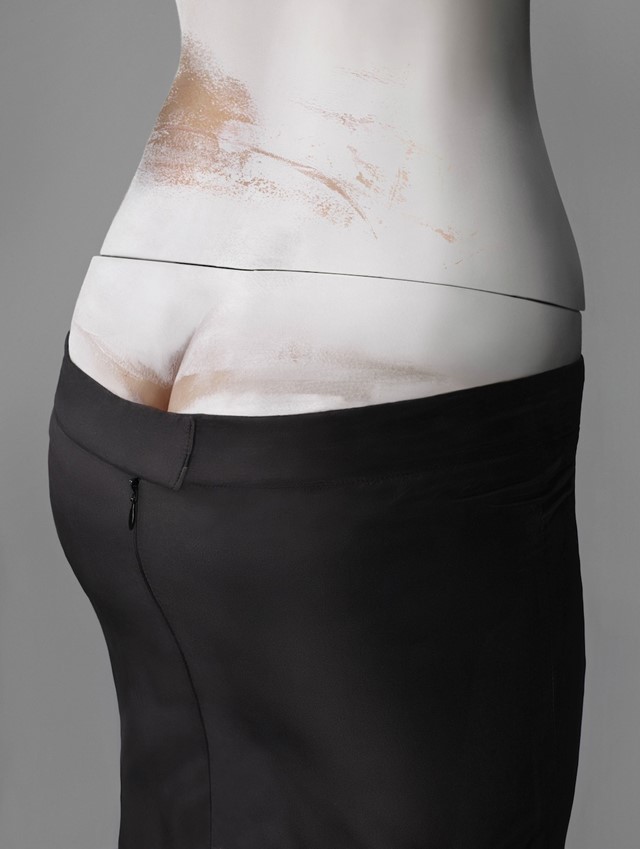We celebrate the most iconic bottom-focused design in fashion history
Who? On AnOthermag.com's celebrating the bottom (#cheekythursday), it seems wholly appropriate to revisit one of the most iconic examples in fashion history. Alexander McQueen's "Bumster" design debuted in trouser form in his first collection, and continued to feature in varied guises over the years.
"That part of the body – not so much the buttocks, but the bottom of the spine – that’s the most erotic part of anyone’s body, man or woman" — Alexander McQueen
What? McQueen's first collection, entitled "Taxi Driver" was presented on a clothes rail at the Ritz in 1993 – quite different from the large-scale productions McQueen would become known for later in his career. McQueen kickstarted a trend in the denim world, and the low-rise jean (although never as low as McQueen's original design) was a popular style throughout the 1990s and 2000s.
Why? There were thoughts that McQueen originally got his inspiration from the so-called "builder's bum" – when trousers are worn accidentally too low – yet the designer later said it was about elongating the female form. "It wasn't about showing the bum... To me, that part of the body – not so much the buttocks, but the bottom of the spine – that’s the most erotic part of anyone’s body, man or woman," the late McQueen told The Guardian after his first collection.

A season later came another interesting chapter in bottom history, with Rei Kawakubo's "Dress Meets Body, Body Meets Dress" collection for Comme des Garcons, commonly referred to as the "lumps and bumps" collection because of the bulbous padding incorporated into the designs (hips, backs, shoulders and bottoms). Whilst the bottom wasn't Kawkubo's focus, the designs created an arresting silhouette, provoking a variety of responses with some likening the contusions to tumours, and others choosing to see it as a modern interpretation of the late 19th century silhouette, formed by bustles and crinolines. Placing the two collections side by side provoke an interesting comparison – Kawkakubo's shapes emphasis the bottom with padding and fabric, yet McQueen chose to expose the region (bum cleavage included), with clever tailoring.
"The bumster caused a sensation when it was launched in the early nineties," says the MET's curator Andrew Bolton, who worked on McQueen's retrospective. "I think what’s interesting about McQueen is how he would harness the attitude in the street. He was very much about anarchy and about the anarchy of the British street, the anarchy of British music, and trying to, again, harness that into his clothes. And the bumster was one of the garments that, very early on, would make his reputation as this provocateur."
Text by Laura Bradley
See the best bums in the AnOther Magazine archive here, and AnOther's Favourite bums in art here.
